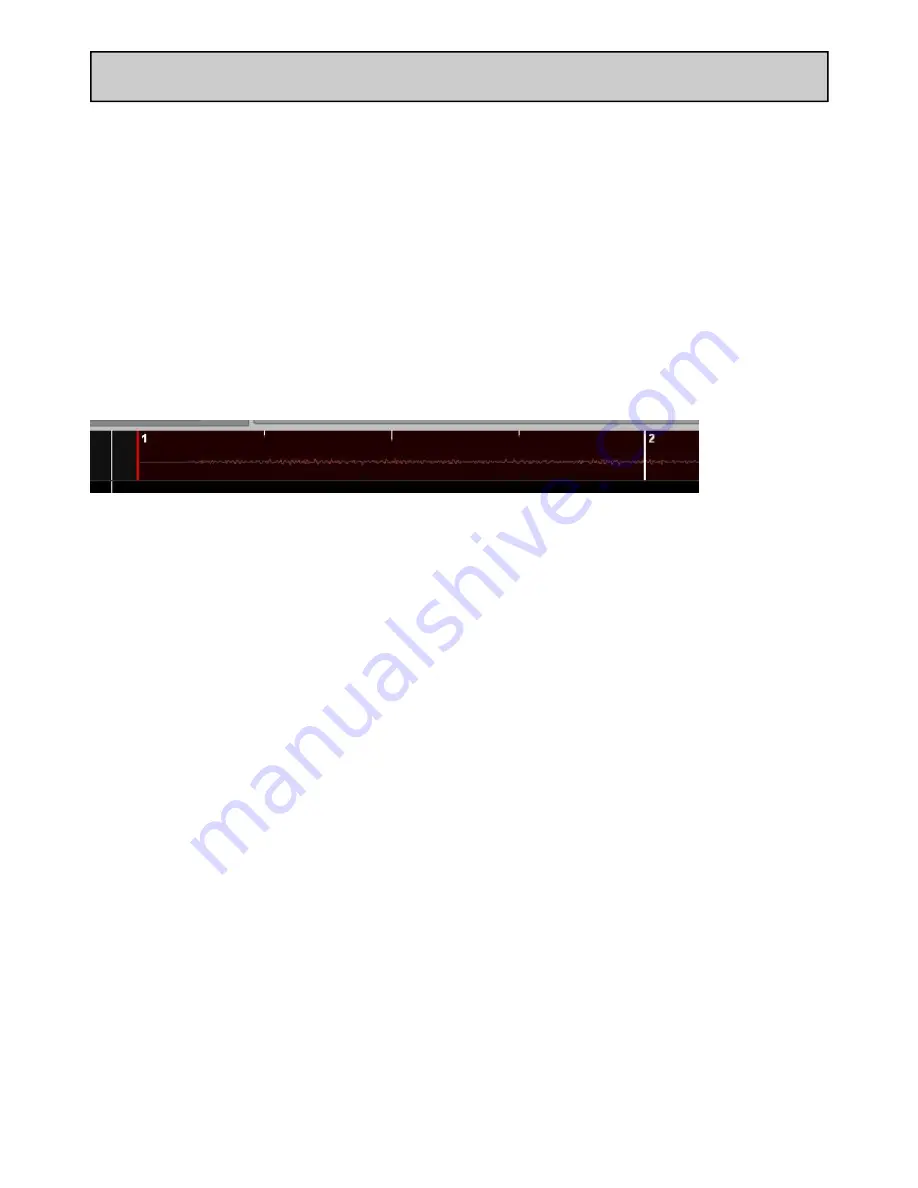
Allen & Heath User Guide for XONE:DX with Serato ITCH 1.6 26
BEATGRID / SYNC / AUTO TEMPO
THE BEATGRID
A beatgrid is a series of markers within a track that indicate a beat or a transient within the music struc-
ture.
A beatgrid allows ITCH to know precisely where each beat occurs, and where each bar is within the mu-
sic structure. This accurate beat information opens up the possibilities for users to further manipulate a
track and for precise track syncing and advanced looping features.
Calculating the track’s BPM when analyzing an audio file will evaluate the average BPM of a given track.
Some track’s BPMs are linear, so setting an accurate beatgrid is easy, only requiring you to set the first
downbeat Beat Marker. If you have tracks with variable BPMs you can also set custom beat markers,
which will snap the track more accurately to the grid.
BEATGRID WAVEFORM VIEW
The beatgrid is placed on top of the waveform overview. It is displayed as follows:
A thick white bar line bar indicates the beginning of each bar.
Each beatgrid bar has the bar number at the top of the marker.
The first downbeat Beat Marker will be number 1.
Each beatgrid bar is divided up into 4 thin line divisions.
A thick red line will indicate a manually set Beat Marker.
BEFORE CREATING A BEATGRID
Setting up a beatgrid relies on the track having an accurate BPM value calculated, so ITCH can set the
beatgrid markers on the track’s beats or transients. (See page 46 for Analyzing Files.)
NOTE: The BPM analyzing has been greatly refined in ITCH 1.6 and later. It is highly recommended that
you force re-analyze your entire library again using this new analyze calculation. In offline mode, hold
down Ctrl and click the ‘analyze files’ button to re-analyze your files.
CREATING A BEATGRID
If a track has no cuepoint set, then ITCH will use the first transient (this could be a kickdrum or bass
note) to calculate the first Beat Marker. If you have set a cuepoint, ITCH will automatically use this to set
the first Beat Marker.
Once the first Beat Marker is set, ITCH uses the track's BPM to automatically create a beatgrid through-
out the track. If the BPM is very accurate this could be all you need to do. If not, you may need to adjust
the beatgrid, or place further Beat Markers to allow for some tempo variations.
To check if the beatgrid has calculated the markers correctly you can skip forwards into the track to see
if the markers fall on the beats or not (after a breakdown is a good place). It is also a good idea to go to
the track’s outro and see if the markers are still falling on the beats.






























